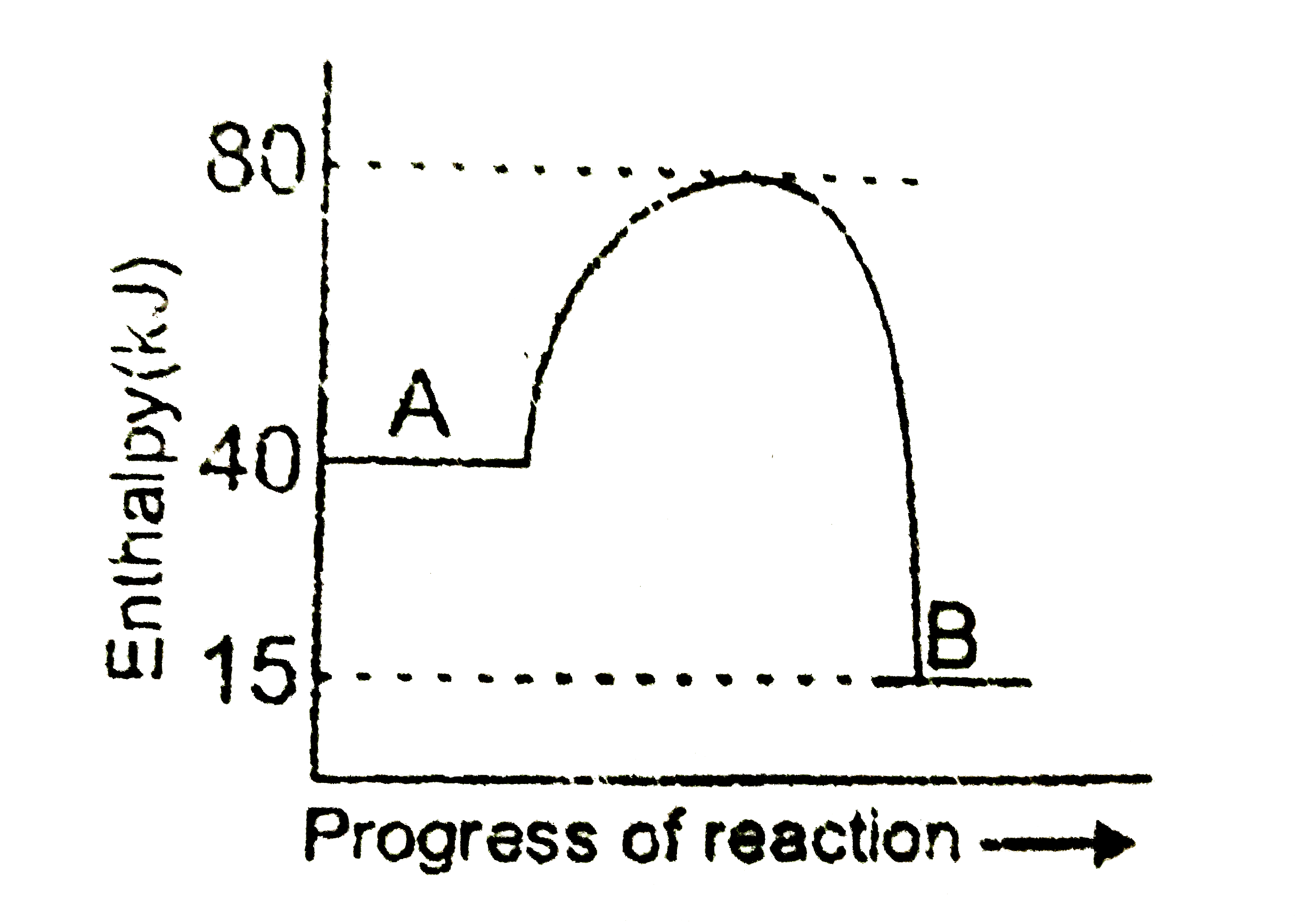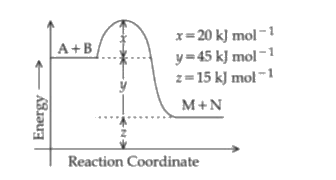If the enthalpy of B is greater than of A, the reaction is
Endothermic
Exothermic
Instantaneous
Spontaneous
The correct Answer is:A
To determine the nature of the reaction A→B based on the enthalpy values of A and B, we can follow these steps:
Step 1: Understand the Enthalpy Change
The enthalpy change (ΔH) for a reaction is calculated as the difference between the enthalpy of the products and the enthalpy of the reactants. In this case, we have:
ΔH=HB−HA
where HB is the enthalpy of product B and HA is the enthalpy of reactant A.
Step 2: Analyze the Given Information
According to the problem, it is given that the enthalpy of B is greater than that of A:
HB>HA
This implies that:
ΔH=HB−HA>0
Step 3: Determine the Type of Reaction
Since ΔH is positive, this indicates that the reaction absorbs energy from the surroundings. Such reactions are classified as endothermic reactions.
Conclusion
Thus, the reaction A→B is an endothermic reaction.
Final Answer
The reaction A→B is endothermic.
---
The enthalpy change (ΔH) for a reaction is calculated as the difference between the enthalpy of the products and the enthalpy of the reactants. In this case, we have:
ΔH=HB−HA
where HB is the enthalpy of product B and HA is the enthalpy of reactant A.
According to the problem, it is given that the enthalpy of B is greater than that of A:
HB>HA
This implies that:
ΔH=HB−HA>0
Since ΔH is positive, this indicates that the reaction absorbs energy from the surroundings. Such reactions are classified as endothermic reactions.
Thus, the reaction A→B is an endothermic reaction.
The reaction A→B is endothermic.
Topper's Solved these Questions
- THERMODYNAMICS AND THERMOCHEMISTRY Book:ERRORLESS Chapter:THERMODYNAMICS AND THERMOCHEMISTRY Exercise:ORDINARY THINKING (Objective Questions) Bond energy
Explore 15 Videos
- THERMODYNAMICS AND THERMOCHEMISTRY Book:ERRORLESS Chapter:THERMODYNAMICS AND THERMOCHEMISTRY Exercise:ORDINARY THINKING (Objective Questions) Free energy and Work function
Explore 57 Videos
- THERMODYNAMICS AND THERMOCHEMISTRY Book:ERRORLESS Chapter:THERMODYNAMICS AND THERMOCHEMISTRY Exercise:ORDINARY THINKING (Objective Questions) First law of thermodynamics and Hess law
Explore 100 Videos
- SOME BASIC CONCEPTS OF CHEMISTRYBook:ERRORLESS Chapter:SOME BASIC CONCEPTS OF CHEMISTRYExercise:JEE Section (Matrix Match type questions)
Explore 3 Videos
Similar Questions
Knowledge Check
Electron gain enthalpy is greater than zero for
ANaBMgCA1DSnLook at the following diagram:

The enthalpy change for the reaction A→B will beA−25kJB−40kJC+25kJD−65kJThe hydration enthalpy of Mg2+ is greater than
AAl3+BNa⊕CCa2+DSr2+
In an endothermic reaction, the total enthalpy of products is greater than that of reactants.
View SolutionIn an exothermic reaction, the total enthalpy of products is greater than that of reactants.
View SolutionAccording to the following figure, the magnitude of the enthalpy change of the reaction A + B → M + N in kj mol−1 is equal to______ (Integer answer)

View SolutionThe IE1 of Be is greater than that of B. [T/F]
View SolutionSTATEMENT-1: First ionization enthalpy of Be is greater than that of B. and
STATEMENT-2: 2p orbital is lower in energy than 2s, orbital.
View Solution
